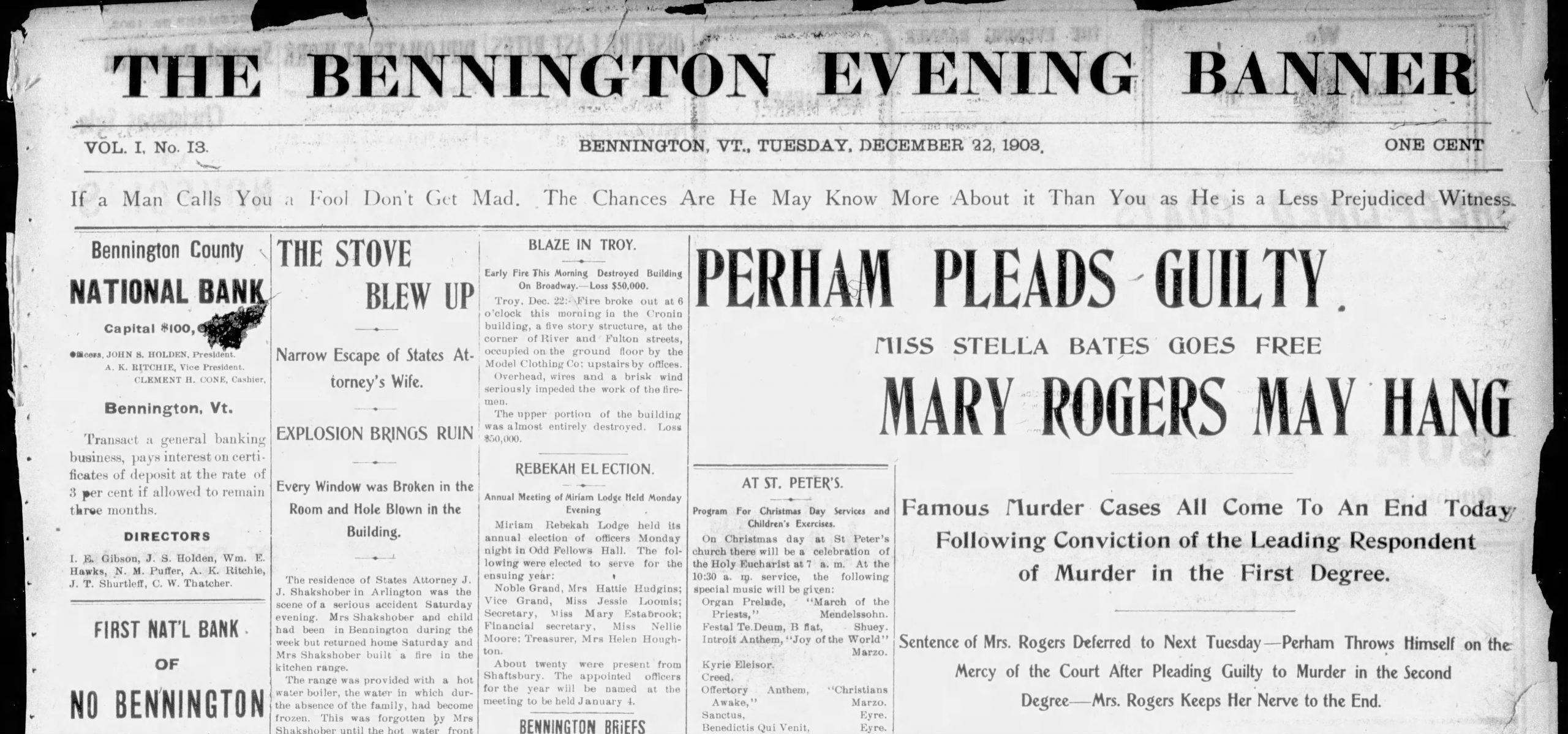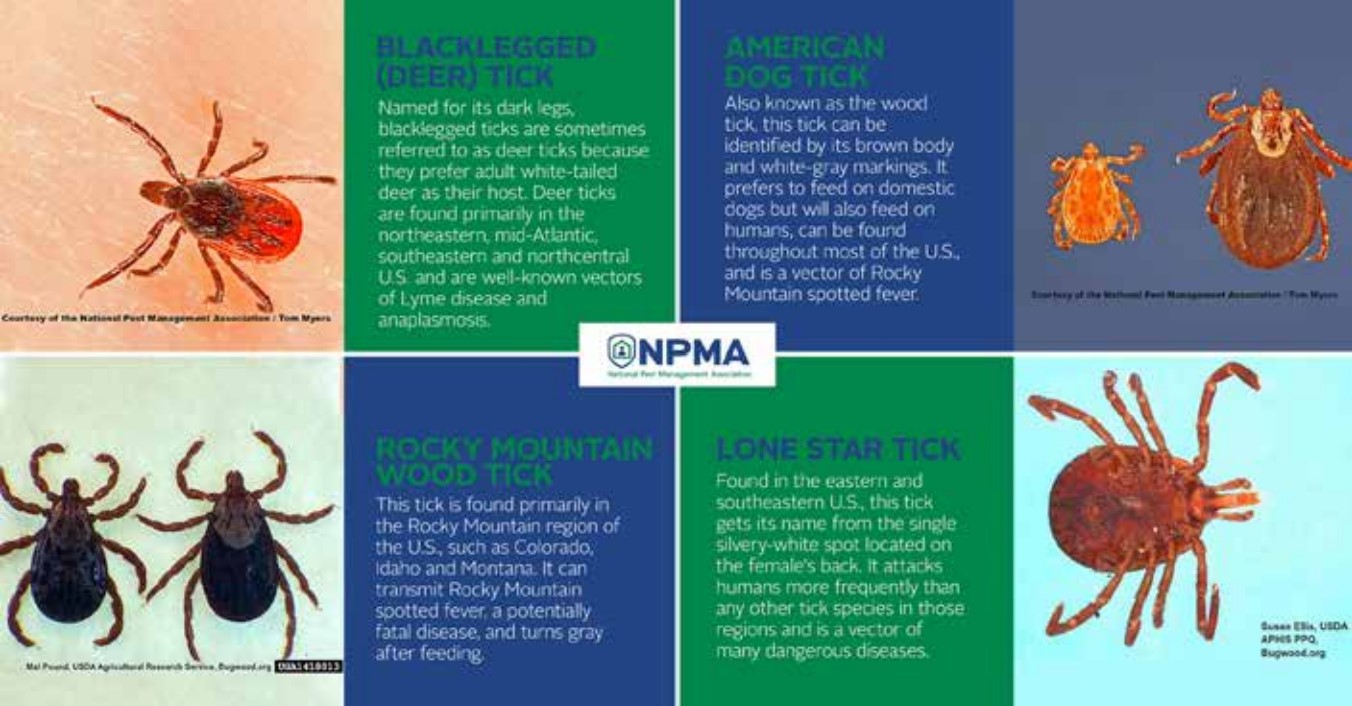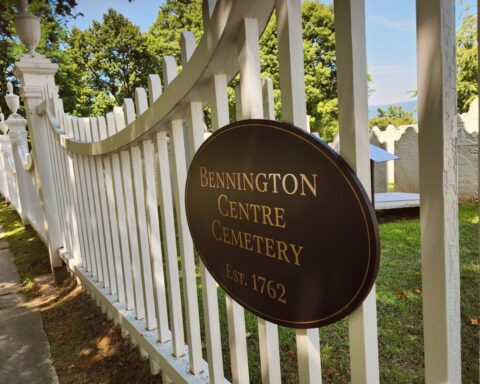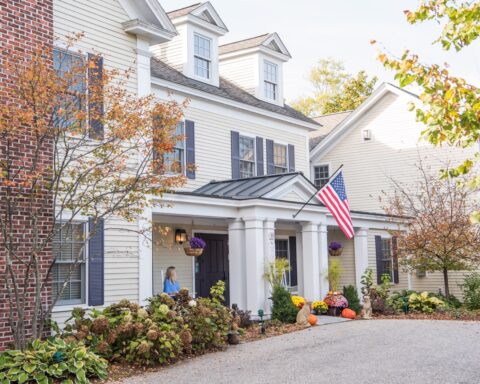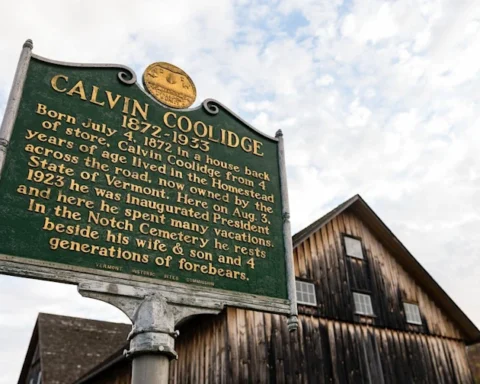Young Bennington woman faked husband’s death by suicide, court ruled
By Lex Merrell
Vermont Country
BENNINGTON — A native to Hoosick Falls, N.Y., Mrs. Mary Mabel Rogers was only 16 when she married 29-year-old Marcus Rogers.
Tragedy hit early in their marriage with the loss of their first child. When their baby was only a few weeks old, Mary dropped her on her head. The infant’s death came soon after.
It was the beginning of a great divide that marred the couples’ entire marriage.
Marcus’ Bennington Blues
In hopes of running away from their sorrow, the couple moved to Bennington. Mary found a job and fell in love with the town, and other things. Marcus, on the other hand, was unhappy being away from his family. So, he moved back to New York state, while Mary lived as an independent woman. She stayed at her job and lived with a friend, Leon Perham.
Their long-distance relationship, difficult to maintain in the early 1900s, put a strain on their marriage. Soon after Marcus’ departure, Mary found herself infatuated with a man named Morris Knapp. Mary lied to Morris about her marital status and wooed him into an affair.
After only a few years of marriage, Mary’s affair ensured she would never be happy with Marcus and sealed his fate.
In a hysterical state, Mary spoke to the police on Aug. 13, 1902, about three years into their marriage. She said Marcus was threatening to drown himself, but the police didn’t take her word seriously. That is until Marcus’ hat and suicide note were found.
His body was found in the Walloomsac River with a lone bruise on his head. The police finally listened to Mary and determined that suicide was the cause of death. He was to be buried, until a member of the Bennington Board of Selectmen demanded an autopsy.
The selectman decided the handwriting on the suicide note was too feminine for Marcus to write himself. That was enough probable cause in 1902 to stop the burial and continue the investigation.
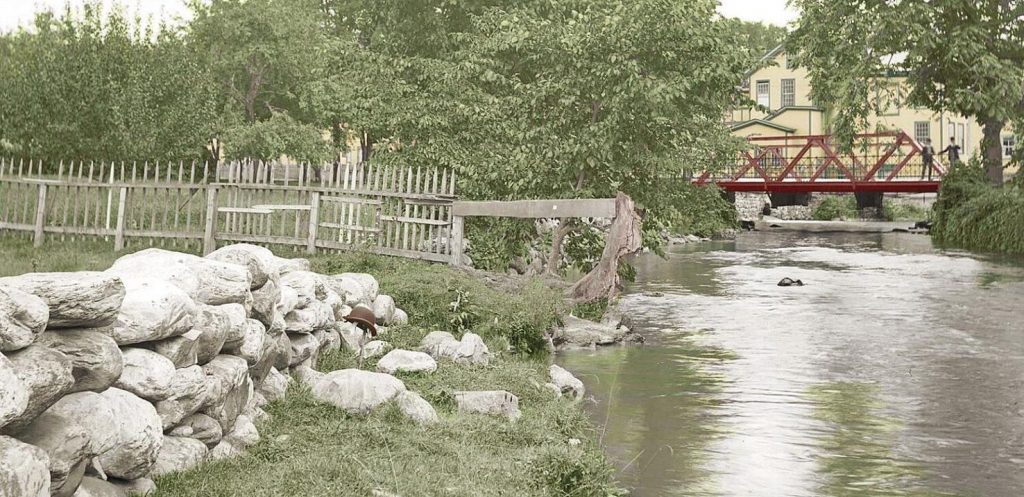
This photo from August 1902, colorized by Tim Wager, shows the scene of the slaying of Marcus Rogers, with the bridge
on Main Street between Morgan and Beech streets in the background, in Bennington. On the rocks can be seen Marcus
Rogers’ hat, which news stories said his wife had placed with a false suicide letter.
One man’s story
The board member’s instincts were correct. The autopsy determined Marcus died from an anesthetic, not drowning. Mary and Leon were the first to be questioned.
Not strong-willed, Leon admitted to being a part of the murder after only five minutes of questioning. He told his side of the story, and he made sure to emphasize one important detail: the murder was all Mary’s idea.
Leon said Mary’s plan was to kill Marcus, so Mary could be free to marry her lover. Her husband’s $500 life insurance policy, worth about $16,500 today, was also an incentive. All it took for Leon to assist in the murder was a $200 bribe.
Mary supposedly lured Marcus to Bennington to discuss them living together again. Marcus, excited to get his wife back, never questioned her motives.
That night, the couple and Leon went for a walk. Once in a secluded area, Mary and Leon tricked Marcus into letting them tie him up. Mary then removed the chloroform hiding in her corset, applied it to a handkerchief and forced Marcus to inhale. After Marcus’ death, Mary and Leon placed the body in the water and left his hat on the tree limb.
On June 12, 1903, Mary Rogers was arraigned for the killing of Marcus Rogers, and Leon Perham was charged as an accomplice. Mary and Leon both pleaded not guilty.
Leon, after admitting to his part in the murder, had a quick trial. The tired and pale man was sentenced to a life of hard labor.
Mary also had a quick trial. Everyone believed Leon’s story, and Mary was found guilty.
A questionable sentencing
More than 1,000 people squeezed into the small courtroom to hear the verdict. With no sign of fear, or remorse, on her face, Mary was found guilty. Still, there were stories of her sobbing violently in her cell on the nights following the verdict.
That December, Mary was sentenced. Prior to the outcome, Mary simply said, “I’m not guilty.” Her declaration of innocence was ignored, and she was sentenced to death by hanging.
Mary’s case became a national story. Interviewed at the time, Mrs. Lysander John Appleson, of Kansas — having conservative priorities — requested that Rogers be hanged while wearing long bloomers that reach her ankles. “We can not permit any vulgar display of limbs,” she said.
Others were concerned with the morality of capital punishment. The St. Albans Messenger wrote she shouldn’t be hanged, “Not because she doesn’t deserve it, but because hanging is out of date.”
Others simply detested the thought of hanging a woman. The local sheriff was grateful when Mary’s execution was commuted. Not because he thought she was innocent or because he was against capital punishment. No, he thought the act of executing a woman would be “repugnant.”
Former Gov. Charles J. Bell, for no obvious reason, seemed to want Mary alive. He commuted her execution three times until her case was sent to the state Supreme Court.
Who would kill Mary first?
While Mary awaited her fate in prison, someone attempted to take her death sentence into their own hands. There were three attempts on Mary’s life when she was jailed. In all three cases, someone tried to kill her through a poisoned envelope.
In one case, the superintendent of the prison was offered $2,000 to give one of the envelopes to Mary.
All of the attempts to save — and poison — Mary were unsuccessful.
The Supreme Court came to the same end as her first trial. She was found guilty and sentenced to death by hanging. This time, no one could save her.
On Dec. 8, 1905, then-22-year-old Mary Rogers walked to the gallows with her head held high. Once again, she showed no fear.
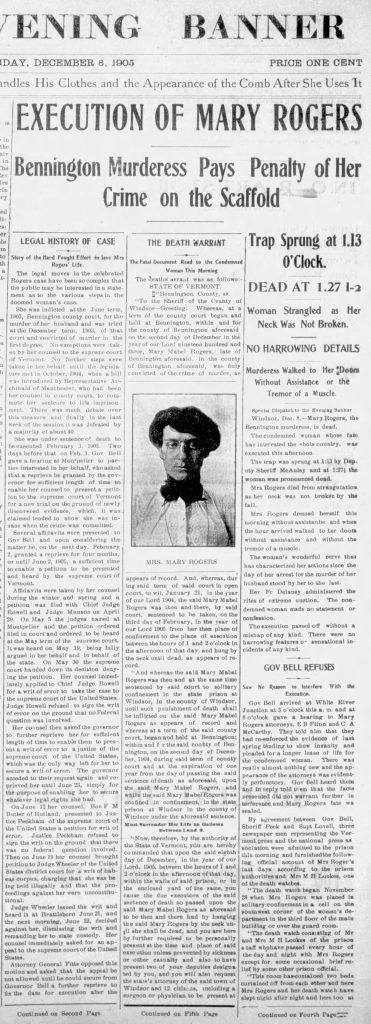
The platform of the gallows dropped from under her feet at 1:13 p.m. Unfortunately for Mary and onlookers, her neck did not break on impact. After 14 minutes of agony and strangulation, Mary was pronounced dead at 1:27 p.m.
Rogers was buried the next day, with her mother, three sisters and a dozen onlookers attending.
It took more than a century for her to receive a headstone, at Saint Mary’s Cemetery in Hoosick Falls, according to an online grave compendium.
Lex Merrell — is a resident of Hoosick Falls, but they spend most of their days in Bennington. They’re the
community editor and resident crime junkie at Vermont News & Media.
